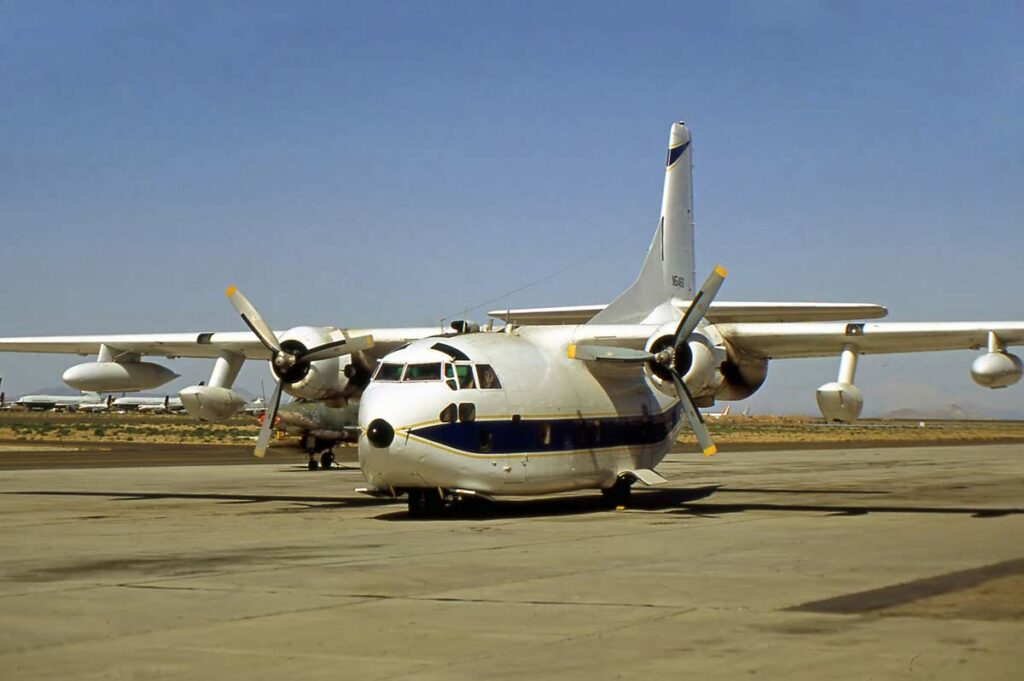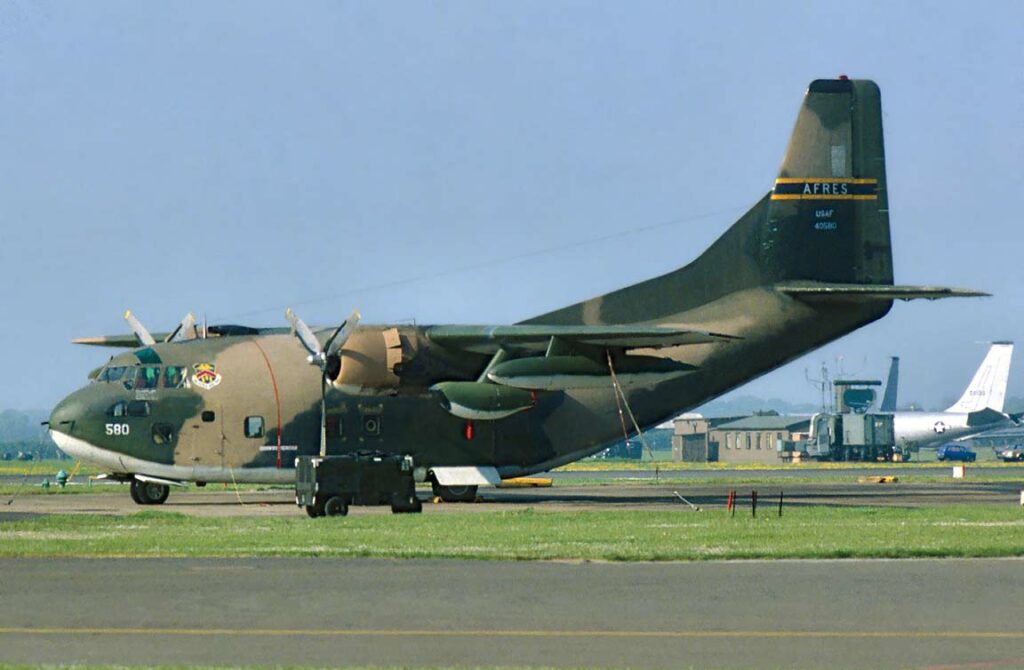The Fairchild C-123 Provider is a short-range military transport aircraft, known for its robust design and ability to operate from unprepared airstrips.
In Brief
The Fairchild C-123 Provider was a military transport aircraft designed by Chase Aircraft and built by Fairchild. Originally developed as an assault glider, it evolved into a powered aircraft, first flying in 1949. The C-123 was powered by two Pratt & Whitney R-2800 piston engines, with later versions, the C-123K, also equipped with two General Electric J85 jet engines. The aircraft had a maximum takeoff weight of approximately 27,215 kg (60,000 lbs) and a payload capacity of around 4,536 kg (10,000 lbs). It featured a high-wing, twin-engine design with a rear-loading ramp, enabling easy loading and unloading of cargo and troops. The C-123 was capable of short takeoff and landing (STOL) performance, making it ideal for operations from rough, unprepared airstrips.
The Fairchild C-123 Provider played a crucial role in U.S. military operations during the mid-20th century, particularly during the Vietnam War. It was designed to meet the need for a robust, versatile transport aircraft capable of operating from short, unprepared airstrips.

History of the Development of the Fairchild C-123 Provider
Developed by Chase Aircraft after World War II, the C-123 Provider originated from large assault glider designs. The prototype, XC-123, was essentially a glider powered by two piston engines and made its first flight in 1949. A second prototype, the XG-20 glider, was unpowered. Chase began manufacturing the C-123B in 1953, but the contract was later transferred to Fairchild, which built about 300 of these aircraft.
In response to the U.S. Air Force’s requirements and the political rivalry with the U.S. Army, the C-123 underwent further development to improve its performance on short runways, similar to the CV-2 Caribou. These enhancements increased the utility of the aircraft and its variants, allowing it to perform various tasks, including search and rescue missions and operations on compacted snow runways in Greenland and Alaska.
Between 1966 and 1969, 184 C-123Bs were converted to C-123Ks, with the addition of two J85 jet engines. These upgrades increased the aircraft’s payload capacity, shortened its takeoff distance, and improved its climb rate. The C-123K variant played a significant role in the Vietnam War, particularly in resupplying troops during the siege of Khe Sanh in 1968.
Design of the Fairchild C-123 Provider
The C-123 Provider’s design was characterized by its rugged construction and ability to operate from unprepared airstrips. It featured a high-wing configuration with a wingspan of approximately 33.5 meters and a length of 23.3 meters. The aircraft’s rear-loading ramp facilitated the loading and unloading of cargo and troops, making it an ideal platform for tactical transport missions.
Powered initially by two Pratt & Whitney R-2800 piston engines, the C-123B had a maximum takeoff weight of around 27,215 kg and could carry a payload of up to 4,536 kg. The addition of two General Electric J85 jet engines in the C-123K variant further enhanced the aircraft’s performance, particularly in terms of payload capacity and safety during engine failure.
The Provider’s high-wing design and large, rugged tires allowed it to operate from rough, unprepared airstrips, making it invaluable for military operations in remote areas. Its STOL capabilities were further improved with the addition of boundary layer control systems in some variants, reducing takeoff and landing distances.
Performance of the Fairchild C-123 Provider
The C-123 Provider’s performance was notable for its era. It had a maximum speed of approximately 290 km/h (180 mph) and a range of up to 1,760 km (1,095 miles) with a full payload. The aircraft’s service ceiling was around 7,620 meters (25,000 feet). The addition of jet engines in the C-123K variant improved the aircraft’s climb rate, payload capacity, and overall performance.
Variants of the Fairchild C-123 Provider
The main variants of the C-123 included the C-123B, the initial production model, and the C-123K, which featured additional jet engines. Other variants included the HC-123B for search and rescue missions, the C-123J with retractable skis for operations in arctic regions, and specialized versions such as the UC-123B and UC-123K for defoliation operations in Vietnam.

Military use and combat of the Fairchild C-123 Provider
The C-123 Provider saw extensive use in military operations, particularly during the Vietnam War. It was used for airlifting troops and cargo, as well as for defoliation missions under Operation Ranch Hand. The aircraft’s STOL capabilities made it ideal for operations in Vietnam’s challenging terrain. Following the Vietnam War, remaining C-123s were transferred to the Air Force Reserve and the Air National Guard, where they continued to serve into the mid-1980s. The C-123 was also used by other countries, including the South Vietnamese Air Force and the Royal Thai Air Force.
The Fairchild C-123 Provider was a significant military transport aircraft, known for its rugged design, versatility, and ability to operate from unprepared airstrips. Its contributions during the Vietnam War and in other military operations underscore its importance in the history of military aviation. The C-123’s legacy continues to be remembered for its vital role in supporting troops and conducting critical missions in challenging environments.
Back to Transport planes.